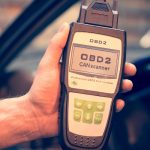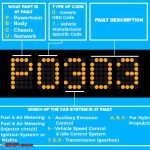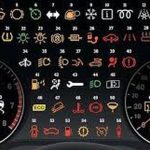Did you know that over 80% of vehicle issues can be diagnosed using an OBD2 scanner? For Toyota owners, understanding error codes is crucial not just for troubleshooting but also for maintaining optimal vehicle performance. This article delves into OBD2 software solutions specifically designed for Toyota vehicles, offering you the insights needed to tackle error codes effectively. By the end, you’ll be equipped with knowledge on how to interpret diagnostics and enhance your driving experience.
Understanding OBD2 and Error Codes
- OBD2, or On-Board Diagnostics 2, is a system in all cars manufactured after 1996 that monitors the vehicle’s health.
- When an issue arises, the car’s computer generates an error code to pinpoint the problem.
- These codes are alphanumeric combinations that correspond to specific malfunctions within the vehicle.
In order to address these issues effectively:
- Use an OBD2 scanner: This device plugs into your car and reads the error codes displayed by your vehicle’s computer.
- Refer to a diagnostic trouble code (DTC) list: This list matches each code with its corresponding issue so you can understand what needs fixing.
By understanding OBD2 and interpreting error codes accurately, you can troubleshoot problems effectively using appropriate solutions tailored for Toyota vehicles.
Benefits of Using OBD2 Software for Toyota Vehicles
- Efficiency: OBD2 software for Toyota vehicles allows for quick and accurate diagnosis of error codes, saving time and money on repairs.
- Convenience: With OBD2 software, users can easily access real-time data from their vehicle’s onboard computer without the need for complex diagnostic tools.
- Peace of Mind: By utilizing OBD2 software, Toyota owners can proactively monitor their vehicle’s health and address any potential issues before they become major problems.
Top OBD2 Software Options for Toyota Vehicles
- FORScan: A popular choice among DIY enthusiasts, FORScan offers comprehensive diagnostics and customization options for Toyota vehicles. It can read and clear error codes, perform module programming, and access advanced features not available with generic OBD2 scanners.
- Car Scanner: This user-friendly app is perfect for beginners looking to troubleshoot issues with their Toyota cars. Car Scanner provides real-time data monitoring, customizable dashboard displays, and the ability to generate detailed reports on vehicle health.
- Torque Pro: Known for its extensive compatibility with various OBD2 adapters, Torque Pro is a versatile software option for Toyota owners. It offers customizable PID support, track recorder functions, and advanced sensor reporting capabilities that can help diagnose complex problems efficiently.
Features to Look for in OBD2 Software
- Real-time Data Monitoring: Make sure the software provides real-time data monitoring capabilities, allowing you to see live data from your Toyota’s onboard computer.
- Error Code Definitions: Choose a program that offers detailed error code definitions and explanations so you can understand what each code means.
- Customization Options: Look for software that allows customization options like setting up alerts for specific parameters or creating custom dashboards.
How to Connect OBD2 Software to Your Toyota Vehicle
Connecting OBD2 Software to Your Toyota Vehicle
- Purchase a compatible OBD2 scanner: Make sure the software you choose is specifically designed for use with Toyota vehicles. This will ensure accurate diagnostics and error code reading.
- Locate the OBD2 port in your Toyota: The OBD2 port is usually located under the dashboard on the driver’s side of the vehicle. It may be hidden behind a panel, so refer to your owner’s manual for guidance.
- Connect the scanner to the OBD2 port: Plug in the scanner securely and turn on your vehicle’s ignition without starting the engine. Follow the instructions provided with your software to establish a connection and begin diagnosing any issues present in your Toyota car or truck.
By following these simple steps, you can easily connect OBD2 software to your Toyota vehicle and gain valuable insights into any error codes that may be affecting its performance.
Interpreting Common Toyota Error Codes
Understanding Toyota Error Codes
When interpreting common Toyota error codes, it is important to understand the format in which they are displayed. These codes typically consist of a letter followed by four digits, such as P0123 or C0567. The letter indicates the system or area of the vehicle where the error has been detected, while the numbers provide more specific information about the issue.
Decoding Toyota Error Codes
To effectively decode Toyota error codes, you can refer to your OBD2 software manual or online resources for a list of code definitions. This will help you identify the exact problem that triggered the error code and determine what steps need to be taken for resolution. By understanding these codes, you can diagnose issues quickly and accurately, saving time and money on unnecessary repairs.
Taking Action on Toyota Error Codes
Once you have interpreted a Toyota error code using your OBD2 software, it is essential to take appropriate action promptly. Whether it involves fixing a faulty sensor or addressing an engine misfire, addressing these issues early can prevent further damage to your vehicle and ensure optimal performance. Regularly checking for and resolving error codes with your OBD2 software will help maintain your Toyota’s health and longevity in the long run.
Resolving Engine Performance Issues with OBD2 Software
- Identifying the Problem: With OBD2 software, you can quickly pinpoint the source of engine performance issues by scanning for error codes. This diagnostic tool allows you to see real-time data on your Toyota’s engine performance and identify any underlying problems.
- Troubleshooting Solutions: Once you have identified the error code causing the issue, OBD2 software provides detailed explanations and possible solutions to resolve the problem. This allows you to address the root cause of the engine performance issue efficiently and effectively.
- Monitoring Progress: After implementing a solution based on the information provided by OBD2 software, you can monitor your Toyota’s engine performance in real-time to ensure that the issue has been successfully resolved. This proactive approach helps prevent future breakdowns and keeps your vehicle running smoothly.
Addressing Transmission Problems with OBD2 Solutions
- Quick Diagnosis: OBD2 software can quickly identify transmission issues in Toyota vehicles.
- Efficient Solutions: By pinpointing the root cause of transmission problems, OBD2 solutions offer efficient repair options.
- Cost-effective Maintenance: Regular use of OBD2 software for diagnostics can help prevent costly transmission repairs.
With the convenience and effectiveness of OBD2 solutions, addressing transmission problems in Toyota vehicles has never been easier. Whether it’s a simple fix or a major repair, utilizing OBD2 software ensures that your vehicle stays running smoothly on the road.
OBD2 Software for ABS and Airbag Error Codes
- Efficient Diagnosis: With the right OBD2 software, you can easily identify and resolve ABS and airbag error codes in your Toyota vehicle. This tool provides a detailed report of any issues related to these critical safety systems.
- Comprehensive Solutions: The OBD2 software offers full diagnostics for ABS and airbag error codes, enabling you to pinpoint the exact problem quickly. This saves time and money by eliminating guesswork and ensuring that the necessary repairs are made promptly.
- Peace of Mind: By using OBD2 software for ABS and airbag error codes, you can drive with confidence knowing that your Toyota is operating at optimal safety levels. Regularly monitoring these systems will help prevent potential accidents and ensure peace of mind on the road.
Monitoring Fuel System Errors with OBD2 Tools
- Check for Fuel Pressure Issues: Use your OBD2 tool to monitor fuel pressure readings from the fuel system. Any fluctuations or irregularities could indicate a potential problem that needs to be addressed.
- Monitor Oxygen Sensor Data: Keep an eye on oxygen sensor data through your OBD2 software. This will help you identify any issues with the air-fuel mixture, which can affect the performance of your Toyota vehicle.
By utilizing your OBD2 tools effectively, you can stay ahead of any fuel system errors that may arise in your Toyota vehicle. Regular monitoring and analysis of key data points will allow you to address issues promptly and keep your car running smoothly.
Using OBD2 Software for Emission Control Error Codes
- OBD2 software can help diagnose emission control error codes efficiently: When your Toyota vehicle’s check engine light comes on, using OBD2 software allows you to quickly and accurately identify the issue related to emission control. This software connects to your car’s onboard computer system and provides detailed information about the error codes stored in the system.
- Identify specific problems affecting emissions: With OBD2 software, you can pinpoint the exact cause of emission-related issues. Whether it’s a faulty oxygen sensor, malfunctioning catalytic converter, or other component impacting emissions performance, this technology helps you understand what needs to be addressed.
- Take timely action to rectify emission-related problems: By utilizing OBD2 software for Toyota vehicles, you can take proactive steps to address any emission control errors promptly. This not only ensures your vehicle meets environmental standards but also helps maintain optimal performance and fuel efficiency.
OBD2 Solutions for Electrical System Malfunctions
- When dealing with electrical system malfunctions in your Toyota, the OBD2 software can help pinpoint the source of the issue quickly and accurately.
- The software can scan for error codes related to electrical components such as wiring, sensors, or modules that may be causing problems.
- Once identified, you can use the diagnostic information provided by the OBD2 software to make necessary repairs or replacements to restore proper functioning of your vehicle’s electrical system.
Diagnosing Cooling System Problems with OBD2 Software
- Monitor Coolant Temperature: Use the OBD2 software to check the temperature of your Toyota’s coolant. If it’s running too high or too low, there could be a problem with the cooling system.
- Check for Faulty Sensors: The software can pinpoint any faulty sensors in your Toyota’s cooling system. This information will help you identify and replace any malfunctioning components.
- Inspect Water Pump Functionality: Through the OBD2 software, you can assess if the water pump in your vehicle is functioning properly. A malfunctioning water pump can lead to overheating issues.
In conclusion, by utilizing OBD2 software for diagnostics, you can effectively diagnose cooling system problems in your Toyota vehicle. This tool provides valuable insight into critical components such as coolant temperature, sensor functionality, and water pump performance. By identifying and addressing these issues promptly, you can ensure optimal performance and avoid potential damage to your vehicle’s engine.
Tackling HVAC Error Codes with OBD2 Tools
- Understanding the Problem: When your Toyota’s HVAC system is acting up, it can be frustrating to diagnose the issue. With OBD2 software, you can quickly access error codes related to your HVAC system and determine the root cause of the problem.
- Using OBD2 Tools: By connecting an OBD2 scanner to your vehicle’s diagnostic port, you can retrieve specific error codes that point towards issues in the HVAC system. These codes provide valuable information that helps pinpoint exactly where the problem lies, whether it’s a faulty sensor or a malfunctioning component.
- Taking Action: Armed with this information from your OBD2 tool, you can now take steps to address and fix the issue within your Toyota’s HVAC system. Whether it requires replacing a part or recalibrating a sensor, having access to these error codes through OBD2 software streamlines the troubleshooting process for optimal performance.
OBD2 Software for Steering and Suspension Issues
- Quick Diagnosis: With the help of OBD2 software, you can quickly identify steering and suspension issues in your Toyota vehicle. The software provides detailed insights into error codes related to these systems, helping you pinpoint the exact problem.
- Efficient Solutions: Once the issue is identified, the OBD2 software offers efficient solutions to resolve steering and suspension errors. It guides you through the repair process step-by-step, making it easier for even non-experts to fix the problems.
- Cost-effective Maintenance: By using OBD2 software for steering and suspension issues, you can save money on expensive trips to mechanics. The software empowers you with diagnostic tools that enable proactive maintenance of your Toyota vehicle, ensuring smooth driving experiences every time.
Understanding Tire Pressure Monitoring System Errors
- Check your tire pressure: Before assuming there is an issue with the TPMS, make sure to manually check the tire pressure in all four tires.
- Understand common error codes: Familiarize yourself with common TPMS error codes such as “TPMS Low Battery” or “TPMS Sensor Failure”.
- Consult your vehicle manual: Your Toyota’s manual will provide specific details on troubleshooting TPMS errors unique to your model.
If you continue to experience TPMS errors despite following these steps, it may be time to seek professional assistance. Ignoring TPMS warnings can lead to unsafe driving conditions and potential tire damage.
Enhancing Vehicle Safety with OBD2 Software
- Real-time Monitoring: OBD2 software allows for real-time monitoring of your Toyota’s performance, helping you detect issues before they turn into major problems. This proactive approach enhances overall vehicle safety.
- Diagnostic Capabilities: With OBD2 software, you can quickly diagnose error codes and troubleshoot issues without the need for expensive trips to the mechanic. This saves time and money while ensuring your Toyota stays safe on the road.
- Peace of Mind: By utilizing OBD2 software for full diagnostics of your Toyota, you gain peace of mind knowing that you have a reliable tool at your disposal to keep your vehicle running smoothly and safely.
Troubleshooting Miscellaneous Error Codes with OBD2 Solutions
- Check for Loose Connections: Ensure all connections are secure and not loose to avoid errors.
- Verify Sensor Functionality: Test sensors to confirm they are working correctly before proceeding.
If the error code persists, consult the vehicle’s manual or a professional mechanic. It may indicate a larger issue that requires specialized attention.
Remember to always safely disconnect the OBD2 scanner after use to prevent any damage or interference with your vehicle’s systems.






